Promoted as a one-room test prep venture in 1995, through a strategy of backward integration, career launcher has metamorphosed into cl educate ltd, a multi-divisional corporate spanning the education spectrum and vying for market leadership. Dilip Thakore reports
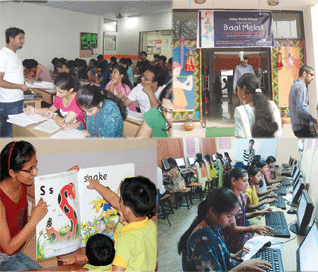 With the forecast for Educomp Solutions and Everonn — hitherto India’s most high-profile and fancied listed private education ICT (information communication technology) services companies — dramatically transformed from sunny to cloudy, the mantle of market leadership in this high-potential sector of the Indian economy has passed to the Greater Noida-based CL Educate Ltd (CLE). Promoted as Career Launcher in 1995 as a one-room test prep venture, through a strategy of well-planned backward integration, CLE has steadily grown into a multi-divisional corporate spanning the education spectrum.
With the forecast for Educomp Solutions and Everonn — hitherto India’s most high-profile and fancied listed private education ICT (information communication technology) services companies — dramatically transformed from sunny to cloudy, the mantle of market leadership in this high-potential sector of the Indian economy has passed to the Greater Noida-based CL Educate Ltd (CLE). Promoted as Career Launcher in 1995 as a one-room test prep venture, through a strategy of well-planned backward integration, CLE has steadily grown into a multi-divisional corporate spanning the education spectrum.
On August, 14 CLE formally came of age and celebrated its entry into its 18th year in typical style by organising a V (video-linked) Srijan (‘birth of auspicious venture’ in Sanskrit), linking employees in 175 learning centres countrywide with the company’s head office in Greater Noida from where its young (early forties) promoter-chairman Satya Narayanan R. and go-getting directors reaffirmed the company’s ideology, core values and commitment to technology-aided education.
Moreover, the top team also annou-nced three new major initiatives to mark the occasion — promotion of the third campus of its highly-successful K-12 Indus World School in Gurgaon; a new Indus World School in Bangalore (both will admit their first batches in 2014), and set a goal to deliver vocational educ-ation and employability training to 25,000 BPL (below poverty line) youth in its coming of age year. “CLE is an employees-driven company with clearly defined values and purposes (‘Empow-ering minds. Creating opportunites’). Reaffirming our goals and re-dedicating ourselves to achieving them seemed the most appropriate way to celebrate the company’s transition into adult-hood,” says Satya Narayanan, universally addressed as Satya within the company and beyond.
Behind the steady, business-like growth of the closely held CLE (esti-mated annual revenue: Rs.200 crore) into the country’s market leader test prep, bricks-n-mortar K-12 schools, vocational training and latterly test prep books publishing company set to promote a private university, is the extraordinary Dick Whittington/ Dhirubhai Ambani story of grit, determination and self-belief of Satya. The third son of four children of D. Ramakrishnan (and his homemaker wife Radha), employed as a telegraphist in the Union Post & Telegraph depart-ment, no expense or effort was spared on the children’s education despite the family’s modest income. The siblings received a typically Asian Tiger Parents upbringing in which excellence and first rank was expected as inevitable and non-negotiable.
Born in Bangalore in 1970, Satya completed primary school in the aided Nehru Memorial High, Hyderabad and his secondary education at Kendriya Vidyalaya, Meerut, finishing higher secondary at the DAV School, Jang-pura, Delhi. True to the family credo of excelling in all he set his mind to, while in high school Satya was selected by former test cricket India captain Bishan Singh Bedi for special training and represented Delhi state in Under-15 and Under-17 national cricket tournaments. “Bishan Sir gave us valuable advice not to neglect academics, because making it big in test cricket is dicey business and the ambition of over 100 million youth. Therefore even while playing cricket regularly, I studied hard averaging over 90 percent in my class XII CBSE exam, and was the only student from my school to be admitted into St. Stephen’s College, Delhi in 1988,” reminisces Satya.
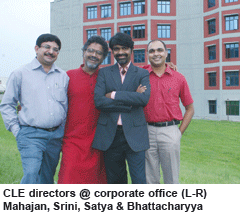 After he was awarded a computer science degree by Delhi University, he passed the CAT (common admission test) of the country’s six Indian Institutes of Management (IIMs), and was admitted into IIM-Bangalore (1991-93) which awarded him its prized postgrad diploma in management. “The IIMs attract the country’s most talented youth. I was an average student at IIM-B. But beyond learning the principles of marketing, I acquired valuable life skills and learned how to work with highly skilled and talented people,” he recalls.
After he was awarded a computer science degree by Delhi University, he passed the CAT (common admission test) of the country’s six Indian Institutes of Management (IIMs), and was admitted into IIM-Bangalore (1991-93) which awarded him its prized postgrad diploma in management. “The IIMs attract the country’s most talented youth. I was an average student at IIM-B. But beyond learning the principles of marketing, I acquired valuable life skills and learned how to work with highly skilled and talented people,” he recalls.
After graduating in 1993, Satya was campus recruited by the Delhi-based pharmaceuticals corporate Ranbaxy Ltd as a management trainee. Looking back on his passage through the subsidised, state-aided education system which is under re-evaluation, he is inclined to endorse its merits. “Contrary to pop-ular thinking, subsidised education is society or government’s invest-ment in developing its human resources. The payback for subsi-dised education comes by way of taxes paid by graduates who succeed in business and the professions. I am proud to state that I have paid back the price of my subsidised education thousand fold. It would be inad-visable to privatise and wholly commercialise the education system,” he warns.
Remarkably, Satya’s siblings followed similar academic trajectories and backed by a strong puritan ethic at home, have also succeeded admirably in their chosen vocations. His eldest brother Dr. Eshwaran is a top-ranked psychiatrist in Seattle, USA; another brother Srini, an alumnus of JNU and IIM-B came aboard CLE in 1998 after a long career in the IT blue-chip corporate TCS, and sister Vani is a Russian language expert and translator. Further-more, after retirement their parents have acquired degrees in Sanskrit language and literature.
Yet despite landing a dream job within the organised corporate sector, Satya quickly became disenchanted with the idea of having to spend a lifetime waiting to get to the top. “I wanted to drive projects and enterprises rather than be a cog in the wheel. Therefore I started offering a personality development programme to B-school aspirants in Delhi,” he recalls. The programme proved popular and prompted him to promote Career Launcher together with several like-minded IIM and IIT graduates of an entrepreneurial bent, helping out on weekends.
In 1995, Satya put in his papers at Ranbaxy and with a start-up capital of Rs.4,000 invested in rented furniture, began working full time at Career Launcher. “Test prep was the only business we could afford to start at the time,” he explains. Shortly thereafter he was joined by Gautam Puri, an IIM-B batchmate who had put in stints with Britannia and Vam Organics prior to graduating in 1995.
Since then over the past 17 years the seed of this modest enterprise has grown steadily and currently, CLE with an estimated annual revenue of Rs.200 crore, has 1,000 employees on its muster rolls in 225 bricks-n-mortar learning centres countrywide, in which over 100,000 learners are being administered test prep coaching, K-12 and vocational education. In the millennium year (2000) Satya and his team which under the Career Launcher banner had already chalked up an impressive record of getting four out of every five IIM entrants from Delhi into the IIMs, received a huge boost when they persuaded the Bangalore-based Intel Capital to invest $1 million (Rs.4 crore) by way of venture capital in the firm. In 2005, Intel Capital was bought out by the promoters, and two years later in 2007 Gaja Capital came in as an investor. Following CLE’s diversification into K-12 education under the Indus World School banner, the Mumbai-based housing finance major HDFC purchased a minority equity stake in CLE. Nevertheless according to Satya, the core founders own a “significant majority stake” in the company which is chalking up “25-28 percent annual growth in revenue and learners’ enrol-ment” (see interview).
Satya’s opinion that CLE has come of age and has built a strong foundation for future growth and development through intelligent upstream diversi-fications and financial partner-ships is shared by Gautam Puri, currently vice chairman and managing director of the comp-any. Puri believes the company’s diversifications can be comfortably funded by its test prep business which contributes over 60 percent of CLE’s revenue, and is still recording double digit annual rates of growth.
 “The test prep and career guidance business will continue to grow because the country’s schools and colleges with their excessive focus on readying students to pass board exams have abdicated their responsibility of helping students to chart careers. Moreover, the school system is still addicted to rote learning and memorisation skills instead of developing students’ reasoning and logic and ascertaining their aptitudes for post-academic careers. These valuable services have been provided by CLE right from the beginning and Career Launcher has earned a good reputation for enabling students to bridge the huge gap between the education provided by the school system and the expectations of the country’s best professional education colleges. And with 1.1 million youth competing for 50,000 seats in the best education institutions countrywide, they have no option but to turn to test prep and career guidance providers such as CLE,” says Puri.
“The test prep and career guidance business will continue to grow because the country’s schools and colleges with their excessive focus on readying students to pass board exams have abdicated their responsibility of helping students to chart careers. Moreover, the school system is still addicted to rote learning and memorisation skills instead of developing students’ reasoning and logic and ascertaining their aptitudes for post-academic careers. These valuable services have been provided by CLE right from the beginning and Career Launcher has earned a good reputation for enabling students to bridge the huge gap between the education provided by the school system and the expectations of the country’s best professional education colleges. And with 1.1 million youth competing for 50,000 seats in the best education institutions countrywide, they have no option but to turn to test prep and career guidance providers such as CLE,” says Puri.
Certainly, enrolments in CLE’s test prep classes for students preparing for B-school, civil services, GATE, GMAT, GRE, law and hotel management schools, IIT, AIEEE and SAT which aggregated 75,000 in fiscal 2011-12 delivered in 225 centres in 175 cities in India and in the Middle East, show no signs of tapering off. On the contrary last year the company inked a collaboration with the nationally famous Chennai-based Brilliant Tutorials (estb. 1970), which claims that 30,000-plus of its alumni have entered the country’s IITs since 1983. Under the agreement, CLE offers the option of Brilliant’s courseware and tutorials in its centres beyond south India.
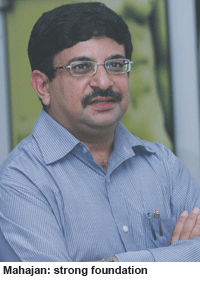 Little wonder that Nikhil Mahajan, a graduate of IIT-Roorkee (BHU) and IIM-Bangalore who began his career in A.F. Ferguson and the Modi Group, signed up with Career Launcher in 1998 and is currently its chief financial officer and strategic planner, believes that over the past 17 years the company has built a strong foundation for further growth at a time when conditions for private initiatives in education have become favourable. “I believe the Central and state govern-ments have become aware that the national objective of meaningfully educating India’s 550 million children and youth can’t be achieved without private sector participation. As a result, government attitudes towards private initiatives have become more liberal and enabling of late. Today it is not difficult to promote education institutions, particularly K-12 and vocational schools. In CLE, we have been successful in translating the high credentials and intellectual capital of the company’s prom-oters into scalable institutional models integrating skills into mainstream education. During the past five years, CLE has successfully entered the vocational, K-12 schools and test prep textbooks publishing businesses and the future of the company is very bright. Indeed, in the national interest, I would advise greater private sector partici-pation in education because reasonable returns are assured and regulatory conditions have become liberal,” says Mahajan.
Little wonder that Nikhil Mahajan, a graduate of IIT-Roorkee (BHU) and IIM-Bangalore who began his career in A.F. Ferguson and the Modi Group, signed up with Career Launcher in 1998 and is currently its chief financial officer and strategic planner, believes that over the past 17 years the company has built a strong foundation for further growth at a time when conditions for private initiatives in education have become favourable. “I believe the Central and state govern-ments have become aware that the national objective of meaningfully educating India’s 550 million children and youth can’t be achieved without private sector participation. As a result, government attitudes towards private initiatives have become more liberal and enabling of late. Today it is not difficult to promote education institutions, particularly K-12 and vocational schools. In CLE, we have been successful in translating the high credentials and intellectual capital of the company’s prom-oters into scalable institutional models integrating skills into mainstream education. During the past five years, CLE has successfully entered the vocational, K-12 schools and test prep textbooks publishing businesses and the future of the company is very bright. Indeed, in the national interest, I would advise greater private sector partici-pation in education because reasonable returns are assured and regulatory conditions have become liberal,” says Mahajan.
The belief that intensifying demand from the country’s rapidly growing middle class for high-quality education has forced state governments in particular, to create conducive condi-tions for private initiatives in education, prompted CLE’s ambitious diversi-fication into K-12 education under the Indus World School (IWS) banner. Since 2005 when IWS, Hyderabad and Indore admitted their first batches of nursery and primary students, the number of IWS schools promoted under the owned and franchise model in tier-II cities has grown to 14 across 21 campuses. However with most IWS schools in their formative stages and not crossing middle school, aggregate enrolment is a modest 4,000 children mentored by 300 teachers.
.gif) “Since we are in the process of designing and perfecting our Ananda (preschool), Jigyasa (primary and upper primary) and Sadhana (class IX-XII) curriculums by adopting and adapting global best practices, we aren’t quite ready yet to introduce higher seco-ndary education. We first want to perfect our systems and curriculums before scaling up,” says Sujit Bhattacharyya, an alumnus of IIT-Kharagpur and IIM-Bangalore who brought work experience from Tata Motors, Wipro and Dharma Software Solutions, USA with him when he came aboard CLE in 2000. Curr-ently, Bhattacharyya is a director of the company, heading its technology management, and chief executive of the Indus World Schools initiative.
“Since we are in the process of designing and perfecting our Ananda (preschool), Jigyasa (primary and upper primary) and Sadhana (class IX-XII) curriculums by adopting and adapting global best practices, we aren’t quite ready yet to introduce higher seco-ndary education. We first want to perfect our systems and curriculums before scaling up,” says Sujit Bhattacharyya, an alumnus of IIT-Kharagpur and IIM-Bangalore who brought work experience from Tata Motors, Wipro and Dharma Software Solutions, USA with him when he came aboard CLE in 2000. Curr-ently, Bhattacharyya is a director of the company, heading its technology management, and chief executive of the Indus World Schools initiative.
According to Bhattacharyya, CL Educate’s hastening slowly policy in its K-12 diversification has enabled the company to get a “good feel” of school education, and helped to fully develop its Ananda kindergarten school curriculum which infuses “real love of learning” in children in the foundational early childhood stage of education. This is followed by the Jigyasa curriculum for primary and upper primary children which encou-rages questioning and inquiry, and the Sadhana curriculum for classes IX-XII which through “slow seeding” and “gradualism” prepares children for careers. “Our guiding mantra is age-appropriate education so that students’ love of learning is never extinguished. And this mantra has resonated with IWS parents with whom we regularly conduct satisfaction surveys. For our innovations and initiatives in school education, the average satisfaction level is an encouraging 93-94 percent,” says Bhattacharyya.
Quite obviously, development of the academic philosophy and uniquely child-friendly and child-centric curriculums and pedagogies of the IWS initiative which seems to be blazing a new path in K-12 education, requires heavy investment of time, money and effort. Within IWS, this investment is being led by Uma Ramachandran, a chemical engineering alumna of IIT-Delhi who acquired valuable research and team-building experience while working in the pharmac-euticals industry (Cipla, Dr. Reddy’s Labs, Ranbaxy) before signing up with CLE in 1998. Currently, she is the academic and curriculum head of Indus World Schools and her team of five is unanimously credited with designing IWS’ joyful pre-primary Ananda curriculum.
 “My focus is to research the best pedagogic practices worldwide and develop the teaching tools for mean-ingful learning of curriculum subjects in IWS classrooms, while simult-aneously developing the life skills of our students,” explains Ramachandran whose team is currently engaged with finalising IWS’ Jigyasa and Sadhana curriculums.
“My focus is to research the best pedagogic practices worldwide and develop the teaching tools for mean-ingful learning of curriculum subjects in IWS classrooms, while simult-aneously developing the life skills of our students,” explains Ramachandran whose team is currently engaged with finalising IWS’ Jigyasa and Sadhana curriculums.
While to all intents and purposes CLE’s backward integration into K-12 bricks-n-mortar schools on the owned and franchised model (target: 100 schools by year 2020) has got off to a slow but well-grounded start, in 2010 the company’s top brass took a forward-looking decision to venture into mass scale vocational education and training (VET). Since then, CLE’s SkillSchool division has trained 15,000 youth in 21 trades as diverse as diesel mechanics, retail sales, household wiring, industrial tailoring etc, and has set itself a target to train 120,000 people in 2013-14.
 According to Sanjiv Srivastava, an economics postgrad of Delhi University who worked with some of the country’s top banks including HDFC and Kotak Mahindra before signing up with CLE in 2010 as president and chief executive of emerging business groups, the company’s SkillSchool division has got off to an excellent start because of its readiness to provide low-priced VET to government-funded or subsidised youth. By keeping overheads low — typically CLE rents bungalows or homes in tier-II and III towns and converts them into SkillSchool VET centres — the business model is a quick turnover of large batches of govern-ment-funded students. “The price per trainee paid by state governments is modest. But by training a large number of batches with fixed overheads, we are able to generate surpluses,” says Srivastava, who adds the division has signed MoUs (memoranda of under-standing) valued at Rs.120 crore with state governments. “Moreover since we provide high-quality VET, place our trainees in employment and counsel them in the early months of their service, we have become popular with government officials as well as students’ communities,” says Srivastava.
According to Sanjiv Srivastava, an economics postgrad of Delhi University who worked with some of the country’s top banks including HDFC and Kotak Mahindra before signing up with CLE in 2010 as president and chief executive of emerging business groups, the company’s SkillSchool division has got off to an excellent start because of its readiness to provide low-priced VET to government-funded or subsidised youth. By keeping overheads low — typically CLE rents bungalows or homes in tier-II and III towns and converts them into SkillSchool VET centres — the business model is a quick turnover of large batches of govern-ment-funded students. “The price per trainee paid by state governments is modest. But by training a large number of batches with fixed overheads, we are able to generate surpluses,” says Srivastava, who adds the division has signed MoUs (memoranda of under-standing) valued at Rs.120 crore with state governments. “Moreover since we provide high-quality VET, place our trainees in employment and counsel them in the early months of their service, we have become popular with government officials as well as students’ communities,” says Srivastava.
It speaks volumes about the high-calibre mindset of CLE’s top manag-ement that the wealth of experience the company has accumulated in test prep and career counseling, K-12 schools and vocational education, has been bundled and converted into a marketable service package for schools branded CL Educate Inside. According to Arun Mittal, a commerce graduate of Delhi University who acquired valuable work experience with Hero Mind Testing Co and Manipal Universal before signing up with CLE in 2007 as vice president (business development), CL Educate Inside integrates high and higher secondary school curriculums with test prep and career guidance services. This package also includes the option of Future Map, a career advisory service for high school and higher secondary students.
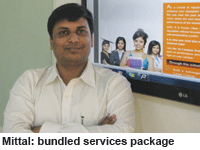 “Under the CL Educate Inside programme, we start preparing students for entrance exams and preferred career paths from class IX onwards. Future Map is a more focused career advisory service which administers psychometric and other tests to help students choose higher education streams and careers. The Future Map service is being provided by CLE to top-ranked schools including Lawrence, Sanawar; Assam Valley, Balipara and DPS, Mathura Road,” says Mittal.
“Under the CL Educate Inside programme, we start preparing students for entrance exams and preferred career paths from class IX onwards. Future Map is a more focused career advisory service which administers psychometric and other tests to help students choose higher education streams and careers. The Future Map service is being provided by CLE to top-ranked schools including Lawrence, Sanawar; Assam Valley, Balipara and DPS, Mathura Road,” says Mittal.
But while a majority of CLE’s carefully plotted diversifications and new initiatives have been put on the rails successfully, during its growth to maturity, the company has also experienced some reverses. The most notable of them is the unexpected failure of the Indus World Business School (IWSB, estb.2008). The general expect-ation was that given CLE’s excellent experience in the test prep business, the top brass was well aware of the gaps and drawbacks of B-school education and IWSB would plug them and quickly establish a reputation as a top-rated business management institute. But evidently, this didn’t happen as in 2011-12 after four years of operations, the school suspended classes for the full-time 24-month MBA programme.
With the benefit of hindsight, the management ascribes the first round failure of IWSB to wrong timing — the company entered the B-school business at a time when the number of B-schools countrywide had jumped from 1,000 to 4,000 within three years. Moreover, it had opted to offer the traditional two-year PGDA (postgraduate diploma in business administration) instead of the 12-month intensive executive education progr-amme (popularised by the Indian School of Business, Hyderabad). However, the management transformed this blot on its balance sheet into an opportunity by moving the company’s head office into the IWSB premises in Greater Noida, thereby saving the huge rent it was paying in Delhi. “The operations of IWSB have been suspended, not termi-nated. We have reserved capacity within our Greater Noida head office to restart IWSB after devising a new sustainable development model,” says Gautam Puri.
 Despite this setback — perhaps inevitable for a company whose top management is adventurous about backward and forward diversification opportunities — on the whole the steady growth and development of CLE within the government-dominated and fiercely competitive education services sector has positively impacted informed public opinion. “There’s no doubt in my mind that CL Educate is among the top quartile of the country’s education products and services companies. The company is ably managed by a team of highly qualified professionals and its brand is well-respected. However its test prep business has been hit by adverse conditions in business manag-ement education, and the potential of CLE’s K-12 and vocational education ventures is yet to be unlocked,” opines Shyam Patwari, an associate of Matrix Partners, Mumbai, a private equity firm with investment in several education companies.
Despite this setback — perhaps inevitable for a company whose top management is adventurous about backward and forward diversification opportunities — on the whole the steady growth and development of CLE within the government-dominated and fiercely competitive education services sector has positively impacted informed public opinion. “There’s no doubt in my mind that CL Educate is among the top quartile of the country’s education products and services companies. The company is ably managed by a team of highly qualified professionals and its brand is well-respected. However its test prep business has been hit by adverse conditions in business manag-ement education, and the potential of CLE’s K-12 and vocational education ventures is yet to be unlocked,” opines Shyam Patwari, an associate of Matrix Partners, Mumbai, a private equity firm with investment in several education companies.
Sandeep Aneja, an alumnus of Stanford Business School and currently managing director of Mumbai-based Kaizen Private Equity, a division of Kaizen Management Advisors Pvt. Ltd, is inclined to be more positive about CLE’s future prospects. “The company is led by seasoned profes-sionals and has recorded steady development in all its businesses. They have built a strong foundation for the future growth of CLE,” says Aneja.
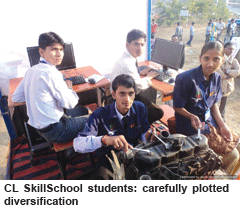 Little wonder then, that small blips on CLE’s radar notwithstanding, Satya who started Career Launcher 17 years ago as a one-room tutorials business, is satisfied with the progress of the company. “In terms of measurable progress — annual revenue, jobs creation and investible surpluses — CLE has achieved more than I ever thought possible. But beyond balance sheet figures, a greater cause for satisfaction is that we have positively impacted the higher education, K-12 and vocational education sectors while practicing enlightened and sustainable capitalism. The top management of this company is wholly committed to the belief that development of India’s abundant human resources is the key to national prosperity and therefore our philosophy is to look beyond shareholders and redeem our promises to all stakeholders — students, parents and government. And perhaps our greatest achievement over the past 17 years is that we have substantially satisfied all stakeholders and won sufficient goodwill to develop a scalable and self-sustaining enterprise whose goals are aligned with the national interest,” says Satya.
Little wonder then, that small blips on CLE’s radar notwithstanding, Satya who started Career Launcher 17 years ago as a one-room tutorials business, is satisfied with the progress of the company. “In terms of measurable progress — annual revenue, jobs creation and investible surpluses — CLE has achieved more than I ever thought possible. But beyond balance sheet figures, a greater cause for satisfaction is that we have positively impacted the higher education, K-12 and vocational education sectors while practicing enlightened and sustainable capitalism. The top management of this company is wholly committed to the belief that development of India’s abundant human resources is the key to national prosperity and therefore our philosophy is to look beyond shareholders and redeem our promises to all stakeholders — students, parents and government. And perhaps our greatest achievement over the past 17 years is that we have substantially satisfied all stakeholders and won sufficient goodwill to develop a scalable and self-sustaining enterprise whose goals are aligned with the national interest,” says Satya.
With Career Launcher coming of age as CL Educate, it is set to realise its full potential.